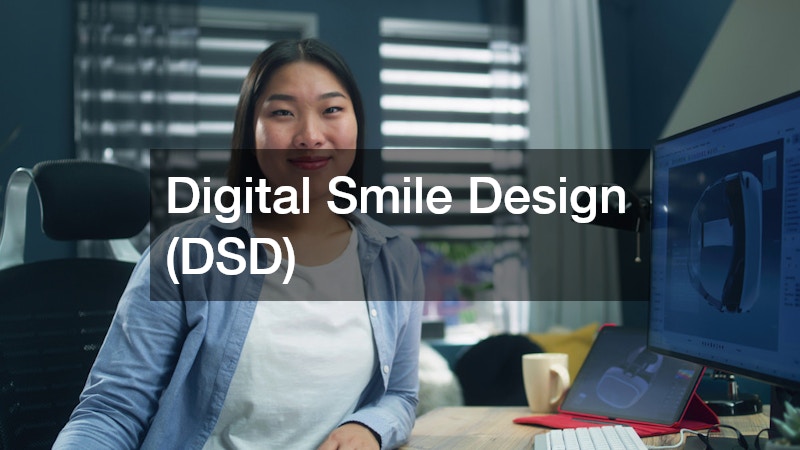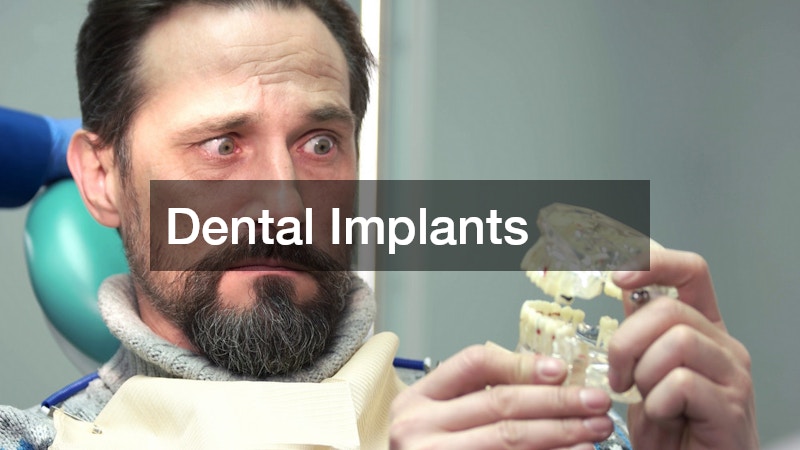How Comprehensive Cosmetic Dentistry Is Changing Smiles in 2025

- Comprehensive cosmetic dentistry in 2025 combines multiple dental disciplines, offering patients full smile transformations under one roof.
- A cosmetic dentist with comprehensive services addresses both aesthetics and function—correcting alignment, restoring teeth, whitening, reshaping gums, and more.
- Digital Smile Design (DSD), 3D printing, and AI-powered diagnostics are revolutionizing how dentists plan and perform cosmetic procedures.
- Popular procedures include porcelain veneers, teeth contouring, gum reshaping, laser whitening, clear aligners, and implant-supported restorations.
- Patients value clinics offering full services such as hygiene care, ortho-cosmetic integration, prosthodontics, and follow-up under one care plan.
- Costs vary, but bundled cosmetic services offer better value; some practices also offer financing, in-house memberships, or phased treatments.
- Choosing a cosmetic dentist with good reviews who also offers comprehensive care improves outcomes, continuity, and satisfaction.
Introduction: The Rise of Comprehensive Cosmetic Dentistry in 2025
In 2025, a cosmetic dentist with comprehensive services doesn’t just fix teeth—they transform lives. As more than 60% of adults aged 25–45 seek cosmetic enhancements, patients now expect more than single treatments—they want holistic smile solutions. Rather than piecemeal procedures, comprehensive cosmetic dentistry integrates aesthetic, restorative, and preventive care into a unified plan. This modern approach ensures not just a beautiful smile, but lasting oral health and facial harmony.
Advancements like Digital Smile Design (DSD), 3D printing, AI-powered treatment planning, and minimally invasive lasers have reshaped expectations. Practices that offer a full-suite of cosmetic and restorative services under one roof now dominate the industry, earning top reputation as cosmetic dentists with good reviews. This article examines how such full-service clinics are redefining smile makeovers in 2025—delivering lasting function, custom aesthetics, and convenience.
I. Understanding Comprehensive Cosmetic Dentistry
Comprehensive cosmetic dentistry integrates multiple disciplines—cosmetic, restorative, orthodontic, and periodontal—into one seamless treatment philosophy. Instead of treating isolated issues, full-service clinics craft a long-term smile plan that considers structure, health, and aesthetics in harmony.
A Holistic Treatment Model
In a comprehensive approach, dentists examine more than the visible tooth surface. They evaluate bite alignment, gum health, jaw function, and facial proportions before recommending procedures. This prevents complications like premature veneer failure or gum recession. Sickly gums, misaligned bite, or decay must be addressed first, ensuring that the cosmetic work is durable and stable.
Digital Tools for Ideal Outcomes
Clinics now rely on modern tools—intraoral scanners, digital X‑rays, 3D modeling software, and AI-based diagnostics—to gather data and design treatment steps. Patients can preview their future smile digitally before any physical work begins, reducing anxiety and enhancing informed consent.
Multi‑Specialty Coordination
A full-service cosmetic dentist may also collaborate with orthodontists, periodontists, or implant specialists within the same practice. For example, if implants are needed alongside veneers, treatment is coordinated seamlessly. There’s no referring or gap in care, leading to improved patient satisfaction and streamlined timelines.
Popular Procedures Offered in 2025
-
Advanced Porcelain Veneers and no-prep veneers
-
Gum contouring using lasers
-
Clear aligner therapy (e.g., Invisalign)
-
LED-assisted teeth whitening
-
Dental implants placed with aesthetic planning
-
Micro‑bonding, contouring, and enamel reshaping
By choosing a cosmetic dentist with comprehensive services, patients avoid fragmented care, receive cohesive treatment plans, and benefit from one lifelong smile partner.
II. The Technological Revolution in Smile Design
Modern cosmetic dentistry in 2025 is driven by technology—not just for efficiency, but for precision and patient empowerment.
Digital Smile Design (DSD)
DSD platforms let clinicians map facial features and plan smiles virtually. Patients collaborate with their dentist to select tooth shape, color, and overall aesthetic—then view a 3D simulation before the first treatment begins. Studies show patients who see DSD reconstructions are 50% more likely to commit to full smile treatment, due to increased clarity and assurance.
3D Printing and CAD/CAM
Using in-office milling or 3D printers, dentists can fabricate temporary crowns, veneers, or aligners within hours. This same-day restoration model reduces wait time and clinical visits. Unlike traditional lab delays, patients receive full-service care in fewer sessions.
Intraoral Scanners
Replacing messy impressions, scanners capture precise images of teeth and arch structures. These digital impressions feed directly into smile design software, improving accuracy and comfort.
Soft Tissue Lasers
Lasers enable precise gum contouring, reducing gummy smiles, evening gum lines, and prepping for restorative work—all with minimal bleeding and quicker healing.
These tools create a seamless digital workflow, enabling cosmetic dentists with good reviews to deliver predictable, natural, and minimally invasive results. Learn more about these technologies in this Dental Magazine overview:
III. Core Procedures in a 2025 Comprehensive Smile Makeover
Full smile makeovers involve a combination of procedures curated for long-term function and natural aesthetics.
Porcelain and Composite Veneers
Modern veneers are crafted from ultra-thin, translucent materials that mimic natural teeth. No-prep and minimal-prep designs preserve more enamel, making the procedure less invasive. Porcelain veneers remain a favorite for lasting, stain-resistant smile transformation.
Gum Sculpting
Laser and surgical techniques refine gum lines to improve tooth proportions and symmetry. It’s especially common in conjunction with veneers or crowns to ensure an even bite line and better overall balance.
Teeth Whitening
Advanced LED whitening systems lighten teeth by 5–7 shades in-office, with improved comfort. Take-home custom trays support long-term maintenance. Whitening is often paired with bonding or veneers for enhanced cosmetic impact.
Clear Aligners
Invisible aligners correct mild to moderate misalignment with minimal visibility. When used before cosmetic bonding or veneers, they create a healthier and better-aligned smile canvas.
Dental Implants
Cosmetic dentists place implants not just for function but with aesthetic detail—selecting shade, angulation, and crown design tailored to the surrounding teeth.
Smile Simulation and Preview Tools
3D printing mock-ups and temporaries allow patients to “test drive” their smile before final restoration. This ensures patient commitment and satisfaction.
IV. Why Patients Prefer Full-Service Cosmetic Dentists
Patients increasingly seek cosmetic dental clinics that offer complete smile solutions. Here’s why:
Convenience and Continuity
One practice handling diagnostics, orthodontics, whitening, veneers, and implants eliminates coordination headaches and referral delays.
Higher Precision, Fewer Revisions
Integrated treatment planning minimizes the risk of mismatched procedures—such as veneers placed over misaligned teeth—which often requires rework.
Comfort and Speed
Advanced technology allows for fewer total visits, shorter chair time, and faster recovery, especially with digital workflows and same-day restorations.
Transparent Treatment Plans
Comprehensive dentists provide bundled care options, phased treatments, and digital previews—all helping patients understand cost and process upfront.
Improved Aesthetic and Functional Results
When gum health, bite alignment, and restorative needs are addressed alongside aesthetic goals, patients enjoy durable, balanced smiles.
V. Trends Driving Comprehensive Cosmetic Dentistry in 2025
Cosmetic dentistry is evolving rapidly. According to sources reporting on the top cosmetic trends in 2025Dental Magazine, key changes include:
-
Minimal-Invasive Veneers: New ultra-thin materials and bonding techniques reduce or eliminate enamel removal.
-
AI Smile Design: Treatment planning software now incorporates facial symmetry, emotional expression, and lifestyle factors to tailor cosmetic outcomes.
-
Preventive Aesthetics: Treatments like enamel strengthening, early aligner therapy, and gum health maintenance are integrated into cosmetic plans.
-
Sustainability: Biocompatible and eco-friendly materials are increasingly used, aligning with patient health and environmental values.
-
Celebrity Influence Shift: A move away from hyper-white veneers toward translucent, personalized results is emerging—especially after social media backlash against “Turkey teeth.”Shining Smiles+1Atlas Dental Specialists+1Vogue Business
These trends highlight the demand for cosmetic dentistry that feels authentic, efficient, and health-focused.
VI. How to Choose the Right Comprehensive Cosmetic Dentist
Patients selecting a cosmetic dentist in 2025 should ensure providers offer integrated services with advanced technology.
Key Criteria:
-
Accreditations & Training: Look for AACD membership, ongoing education, and mastery of digital tools.
-
Technology Integration: Clinics using DSD, lasers, 3D printing, and virtual planning offer higher precision.
-
Before-and-After Portfolios: Real cases demonstrating full-mouth makeovers—not just isolated treatments.
-
Patient Reviews: Platforms like Dental Magazine feature testimonials on comprehensive care and lasting results.
-
Custom Treatment Plans: Beware of one-size-fits-all packages; preferred practices tailor to facial symmetry, dental health, and aesthetic goals.
VII. Patient Stories: Smile Transformations in Action
Smile Makeover Example: Complete Transformation
Susan, aged 42, underwent clear aligners, gum contouring, porcelain veneers, and whitening. Her new symmetrical smile reflected not just better teeth alignment but improved facial balance and confidence. She praised her cosmetic dentist with comprehensive services for coordinating every step under one roof.
Subtle Change Example: Bonding + Whitening
Jake, 36, opted for composite bonding and in-office whitening to correct minor chips and discoloration. Though modest, the changes elevated his smile, and he appreciates the minimally invasive, yet polished results.
VIII. Future Innovations Beyond 2025
Looking ahead, cosmetic dentistry is poised to adopt emerging technologies that deepen customization and health integration:
-
AI-Driven Personalized Aesthetics: Smile designs influenced by genetics, facial symmetry, and emotional expression.
-
Regenerative Dentistry: Biotech techniques like stem-cell tooth regeneration could redefine cosmetic goals—repairing rather than covering.
-
Facial Structure Enhancements: Treatments may correct bite for both aesthetic and skeletal benefits.
-
Virtual and Augmented Reality Planning: Immersive previews to simulate not just smile, but appearance in different social contexts.
-
Sustainable Dentistry Practices: Eco-certified materials and minimal-waste workflows becoming the standard.
These innovations will further cement the need for cosmetic dentists with comprehensive offerings, capable of adapting treatment to a patient’s evolving goals
Conclusion
In 2025, comprehensive cosmetic dentistry isn’t just a trend—it’s the new standard. Patients expect clinics that can plan, execute, and support their smile transformation holistically. A cosmetic dentist with comprehensive services combines advanced tech, interdisciplinary care, and personalized planning for natural, lasting results.
If you’re considering a smile makeover, look for a practice that integrates diagnostics, orthodontics, aesthetic treatments, and restorative care in one seamless experience. That’s how modern dentistry transforms a smile—and a life.
✅ External Sources & References:
- American Academy of Cosmetic Dentistry (AACD)
Website: https://www.aacd.com - National Institutes of Health – National Library of Medicine
Website: https://www.ncbi.nlm.nih.gov/pmc/ - American Dental Association (ADA)
Website: https://www.ada.org - Healthline – Dental Health Section
Website: https://www.healthline.com/health/dental-and-oral-health - Harvard Health – Dental Articles
Website: https://www.health.harvard.edu/topics/dental-health

